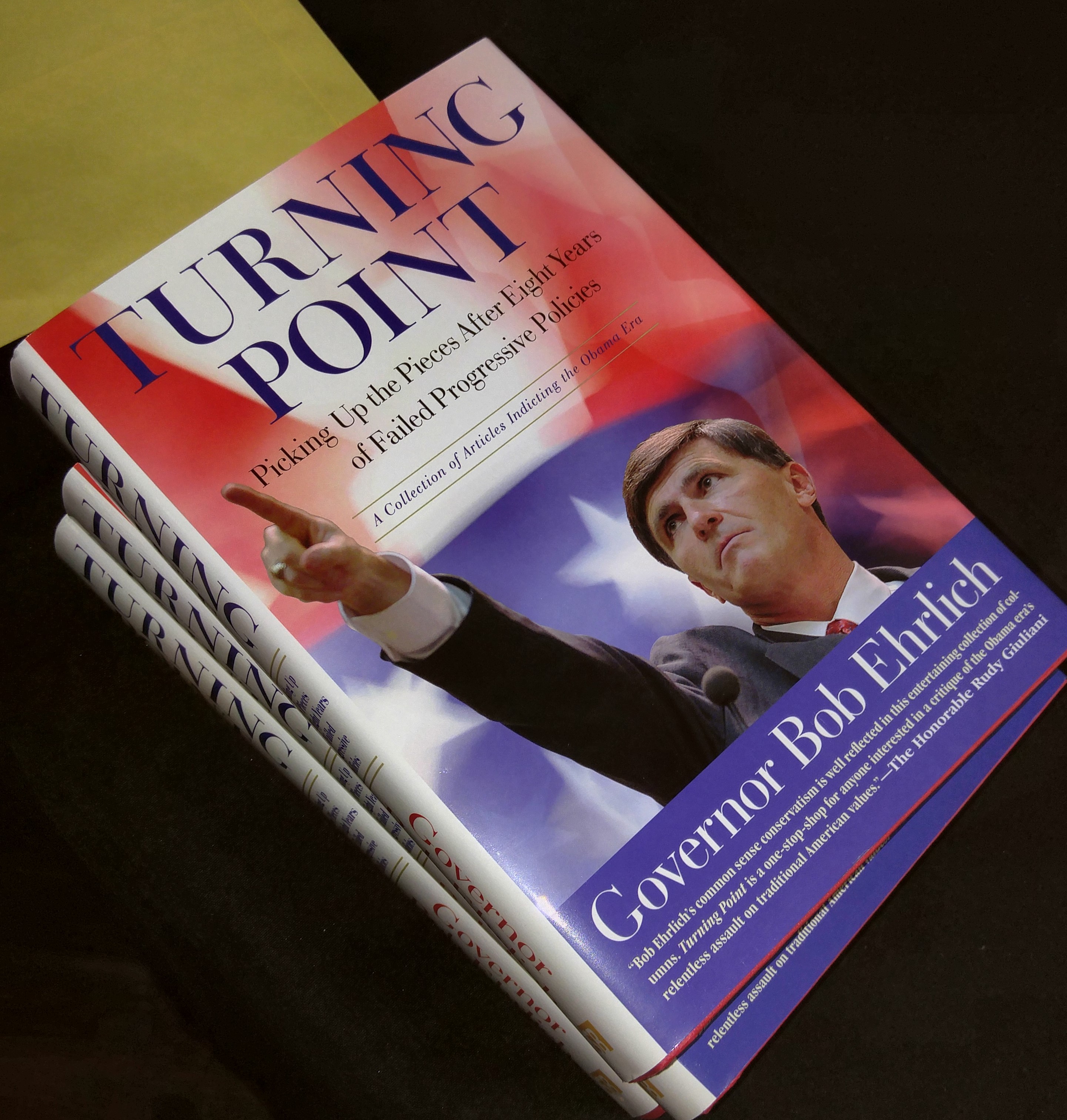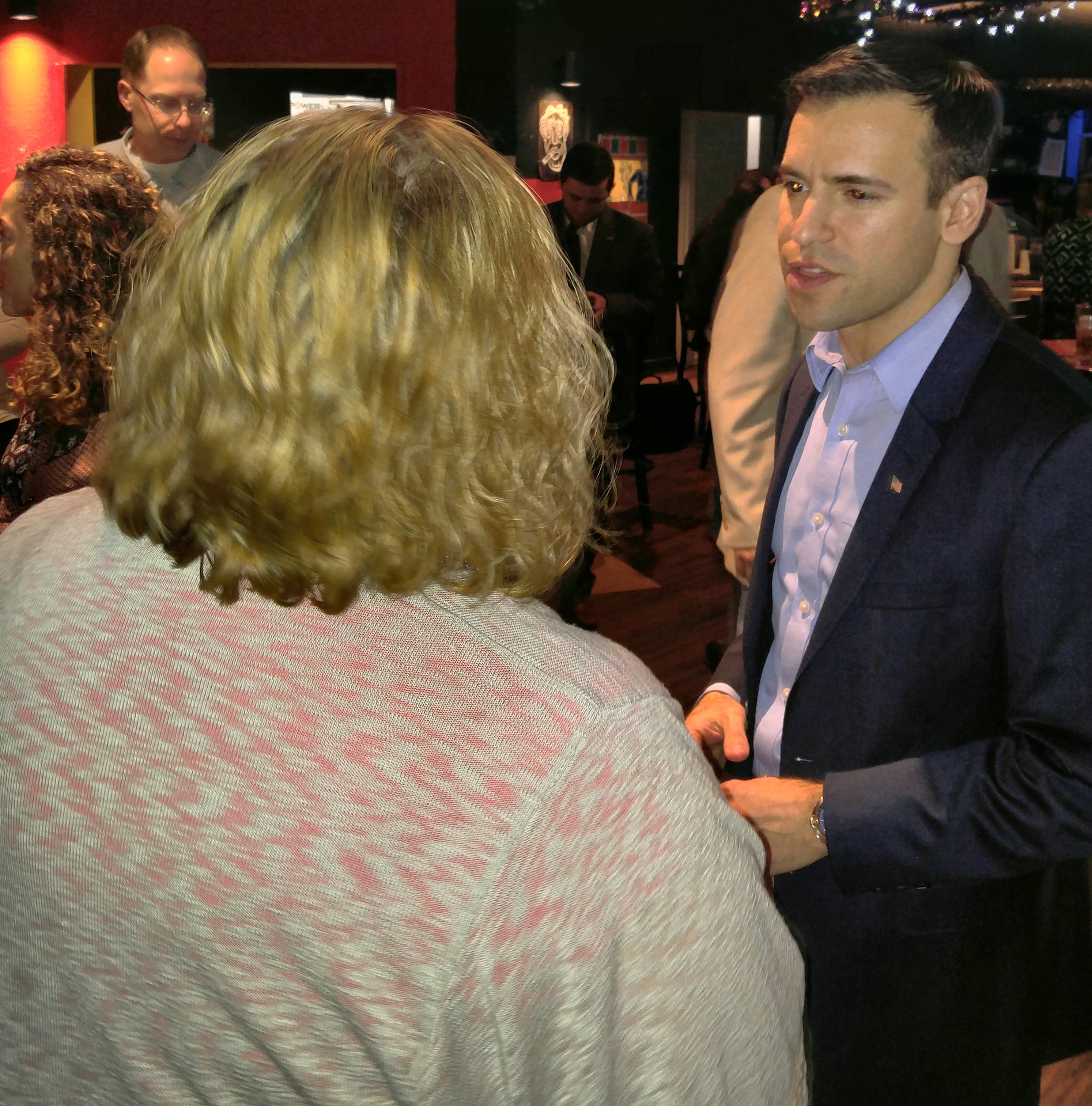I haven’t been paying nearly as much attention to Maryland politics the last few years but every so often I find something rather intriguing. In this case, it’s not too many miles away in Dorchester County.
I saw that over the weekend their county Republicans had their Lincoln Day Dinner. Initially I learned this thanks to a social media post by a locally noted political sign critic but then it went further when I noticed a promoted post on that same social media outlet that led to this blog post.
Apparently we are still far enough away from the primary that Republicans are coming to the Eastern Shore to solicit votes, and in this case the Dorchester LDD featured the two leading contenders for their gubernatorial nomination: Delegate Daniel Cox and onetime Delegate and Hogan administration official Kelly Schulz. In this particular retelling of events it was obvious that the writer was heavily favoring the Cox campaign, which is fine. What’s most interesting, though, is that the contact address for the Shore Times blog where the article came from is the exact same one used by Marc Schifanelli for his school board campaign in Queen Anne’s County. Of course, students of Maryland politics know that Marc’s wife Gordana is Cox’s running mate. So we’re not exactly being stealth here, and I will give credit for pointing that out in due time.
On the other side of the equation – and not being too stealth themselves – is The Duckpin, a site which seems to spend its time tearing down Cox, who they swear up and down isn’t much of a threat on par with the other two no-names in the race. Yet somehow Dan lives rent-free in their heads as they keep writing about him instead of promoting their endorsed choice in Schulz. (Apparently Brian Griffiths wanted to write about more than politics, so Red Maryland was put to bed and The Duckpin was born. He finally figured out what I knew over 16 years ago.)
Anyway, I was reading a piece on the race that made the claim about the link and indeed it’s true. So give the man his credit. But what’s the big deal?
Here’s the problem with being a Republican and running for governor in Maryland: you have to survive a GOP primary.
In 2010, Larry Hogan deferred to Bob Ehrlich, who then proceeded to lose even worse to Martin O’Malley than he did the first time. You may recall there was this phenomenon going around the country back then called the TEA Party…well, they liked this heretofore unknown businessman named Brian Murphy in the gubernatorial primary and enough of them tuned out the overly moderate Ehrlich once Murphy was dispatched back to anonymity to doom Bob to defeat in the general.
In 2014, there was an open seat and the Democrats decided to promote their bland, personality-free LG Anthony Brown to governor. Larry Hogan had spent the four years building up a grassroots group called Change Maryland and he parlayed that into securing the nomination then winning in November – thanks to a lot of the people who abandoned Ehrlich because he wasn’t conservative enough for them. This despite the fact Hogan’s website was about content-free and you couldn’t nail down what he was actually for, just what he was against based on Change Maryland.
Fooled you once… the next time in 2o18 Hogan only won because the Democrats went extreme left with their choice for governor; otherwise, the election was a disaster for Republicans on the order of 2006. (Had he run in 2018 instead of this cycle, we would be commenting on the prospects of Governor Franchot’s re-election. Or perhaps Governor Delaney’s.)
So here’s the problem with Kelly Schulz. In looking her up in the archives of the monoblogue Accountability Project, I had forgotten that she was relatively conservative by my standards – not enough to be a consistent Legislative All-Star (she was just one time in eight years I covered her) but she had an 85 average and that’s very good for a Maryland politician. (With an average that high, I would be hailing her as a savior in Delaware.)
But what I didn’t see when she went into the Executive Branch was a great deal of conservative innovation. It’s good that her “proudest accomplishment (at DLLR) was guiding Maryland’s youth apprenticeship program,” but I would have rather seen efforts to wrest the state from the grip of its unions by edging it toward right-to-work status or taking a hacksaw to regulations like Donald Trump did at a federal level. And the question I have: is this the record of a conservative?
Member, Maryland Electric Vehicle Infrastructure Council, 2019; Maryland Outdoor Recreation Economic Commission, 2019; Small Business Resources and Data Collection Work Group, 2019; Maryland Sustainable Growth Commission, 2019-20; P-20 Leadership Council of Maryland, 2019-21. Board of Directors, Maryland Agricultural and Resource-Based Industry Development Corporation, 2019-22. Member, Maryland Agricultural Education and Rural Development Assistance Board, 2019-22; Governor’s Intergovernmental Commission for Agriculture, 2019-22; Animal Waste Technology Fund Advisory Committee, 2019-22; Maryland Aviation Commission, 2019-22. Board of Directors, Bainbridge Development Corporation, 2019-22. Member, Coast Smart Council, 2019-22; Correctional Education Council, 2019-22; Critical Area Commission for the Chesapeake and Atlantic Coastal Bays, 2019-22; Maryland Cybersecurity Council, 2019-22; Interagency Disabilities Board, 2019-22; Maryland Economic Development Assistance Authority, 2019-22; Maryland Economic Development Commission, 2019-22; Maryland E-Nnovation Initiative Fund Authority, 2019-22; Commission on Environmental Justice and Sustainable Communities, 2019-22; Interagency Food Desert Advisory Committee, 2019-22; Maryland Green Purchasing Committee, 2019-22; Maryland Heritage Areas Authority, 2019-22; State Highway Access Valuation Board, 2019-22; Governor’s Commission on Hispanic Affairs, 2019-22; Maryland Industrial Development Financing Authority, 2019-22; Maryland Life Sciences Advisory Board, 2019-22; Maryland Manufacturing Advisory Board, 2019-22; Council on Open Data, 2019-22; Maryland Opportunity Zone Leadership Task Force, 2019-22; Maryland Port Commission, 2019-22. Board of Directors, Maryland Public-Private Partnership Marketing Corporation, 2019- (chair, 2019). Executive Board, Regional Additive Manufacturing Partnership of Maryland, 2019-22. Member, Governor’s Task Force on Renewable Energy Development and Siting, 2019-22; Renewable Fuels Incentive Board, 2019-22; Rural Maryland Council, 2019-22; Interdepartmental Advisory Committee on Small, Minority, and Women Business Affairs, 2019-22; Maryland Small Business Development Financing Authority, 2019-22; Tri-County Council for Southern Maryland, 2019-22. Board of Directors, Maryland Technology Development Corporation, 2019-22. Board of Regents, University System of Maryland, 2019-22. Member, Governor’s Workforce Development Board, 2019-22; Youth Apprenticeship Advisory Committee, 2019-22; Maryland Zero Emission Electric Vehicle Infrastructure Council, 2019-22.
Member, COVID-19 Small Business Task Force, Baltimore City, 2020; Task Force on the Economic Future of Western Maryland, 2020-22; Maryland Food System Resiliency Council, 2021-22; Historic St. Mary’s City Fort to 400 Commission, 2021-22; Maryland Semiquincentennial Commission, 2021-22; Work Group to Study the Transformation of Manufacturing in Maryland’s Emerging Digital Economy, 2021-22.
Maryland Manual online, accessed March 22, 2022.
Granted, I’m sure most of these are ex officio positions she gathered as the Secretary, but no one said she had to accept a position on the Commission on Environmental Justice and Sustainable Communities or the Maryland Zero Emission Electric Vehicle Infrastructure Council. Her acceptance to me equates with support.
That’s not to say I’m the biggest fan of Daniel Cox, who has styled himself as something of a Trump fanboy. But if you drive around on the back roads of Dorchester County that I frequent on a regular basis on the way to my in-laws’ house, you see a lot of Trump paraphrenalia and a lot of Cox for Governor signs. (Not many people go through Eldorado or Rhodesdale, but I do.) It’s a slice of the electorate that probably won’t turn out for someone endorsed by Larry Hogan because they can’t stand what he’s become. While many were pushed over the edge by the bad blood between Larry Hogan and Donald Trump, they were placed at the precipice like I was after our side was quickly sold out by Hogan to the environmentalists who saddled farmers with onerous phosphorus regulations and later saw Larry kill a golden opportunity for economic growth with an ill-advised fracking ban. So Hogan’s support is electoral poison in those quarters.
Certainly there will be those who say that their staying home and not backing Kelly Schulz will ensure Democratic victory in November. But then again, the same prediction of GOP doom holds true if Cox wins so why not stand up for what you believe?
And people wonder why some of us are so fed up with the system?






